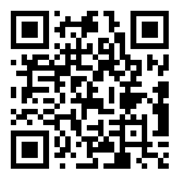Today, I will talk to you about the selection of contact lenses for beginners. It is mainly based on my own experience and the advice of ophthalmologists. If there is anything wrong, I welcome myopic patients and contact experts to supplement and correct it.
First of all, you need to do an examination
Although the examination can be troublesome, if you are planning to wear an invisible baby, it is really necessary to go to a regular hospital for a check-up.
Eye condition examination
The doctor will comprehensively evaluate whether the condition of your eyes is suitable for wearing invisible lenses.
For example, long-term conjunctivitis, glaucoma, diabetes, dry eye, etc. may suggest you not to wear stealth. Although regretful, do not sacrifice your health at the cost. Also, it is better to wear a frame if you are too young (primary and secondary school students).
Optometry
Next, you need to undergo optometry. Generally speaking, there is a difference between the degree of the same person's framework and the degree of invisibility.
And invisibility generally does not have astigmatism, so for babies with high astigmatism, customization may be very troublesome. After the test, you can ask a doctor to measure the condition of the base arc for you.
Important indicators of contact lenses:
Those familiar with invisibility know that there are several very important indicators that directly determine whether you are comfortable and suitable to wear this invisibility. Doctors can help you measure indicators such as basal arc, while others are based on your own needs.
Base arc
This indicator is very important. It refers to the curvature radius of the surface behind the lens. Speaking of people, it means the flatness of contact lenses.
The larger the base arc, the flatter the inside of the lens; The smaller the base arc, the greater the curvature inside the lens. So if it's too loose, it will slide, and if it's too tight, it will make the eyeballs feel tired from being caught. But the base arc does not necessarily mean a perfect match. Generally, a difference of 0.1 is not a big problem. For example, some people have an 8.6 base arc, and wearing an 8.7 invisibility is also okay. (I would rather be slightly larger by 0.1, but having smaller eyes can be tiring.) But I have also bought 8.4 and 8.8 base arcs at a young age, one slide and one tight eye
Moisture content
The moisture content of contact lenses refers to the proportion of water in the lens.
The higher the moisture content, the more water is needed for this invisible product. Generally speaking, the higher the moisture content of the same material, the better its oxygen permeability, but try to avoid wearing invisible materials with high moisture content.
The reason is that if worn for a long time, the lens will lose some moisture, so you will use your tears to replenish and maintain its moisture content. Soon my eyes felt uncomfortable.
Oxygen permeability
As the name suggests, oxygen permeability refers to the degree to which oxygen can pass through the lens. Lenses with high oxygen permeability can fully ensure the "breathing" of the eyes. Generally speaking, the higher the water content, the higher the oxygen permeability.
But there is no relationship between the two. Because the oxygen permeability is also closely related to the lens material and center thickness. Some good materials can break the law that "high oxygen permeability and low water content cannot coexist", such as silicon hydrogel materials.
Center thickness and diameter
The thinner the center thickness, the higher the comfort, enhancing oxygen permeability.
The diameter actually determines the size of the lens, and if it is not suitable, it can cause a foreign object sensation in the eyes. Generally, 14mm is more suitable.
How to choose annual, semi annual, monthly, or daily selling?
Basically, we distinguish invisibility based on its duration. Long term abandonment of lenses (more than three months) and short-term abandonment of lenses (less than three months), the four types mentioned in the question are relatively common, but later what seasonal or bi weekly abandonment appeared.
The summary is as follows:
Beginners are advised to choose monthly or semi annual throwing, as daily throwing is too soft and inexperienced, making it easy for beginners to not fit in. After becoming proficient, one can choose to sell on a bi weekly or daily basis;
My personal suggestion is to throw it away in Kaifeng every 4-5 months and every 8-10 months. You don't have to wait for the expiration date, because even if you take good care of it, the lenses that are nearing expiration may have attached a lot of protein or even deformed. Will make the eyes uncomfortable;
Be sure to pay attention to hygiene. Except for daily lenses, all other lenses need to be rubbed with care solution in the palm of the hand, then lifted and rinsed with care solution for 5 seconds. Nursing solution should not be expired or reused.
Both daily and monthly selling are relatively expensive. Anyway, wearing invisibility is a dead end. For the sake of health and hygiene, it is advisable to choose short cycle disposable lenses as much as possible after adaptation.






